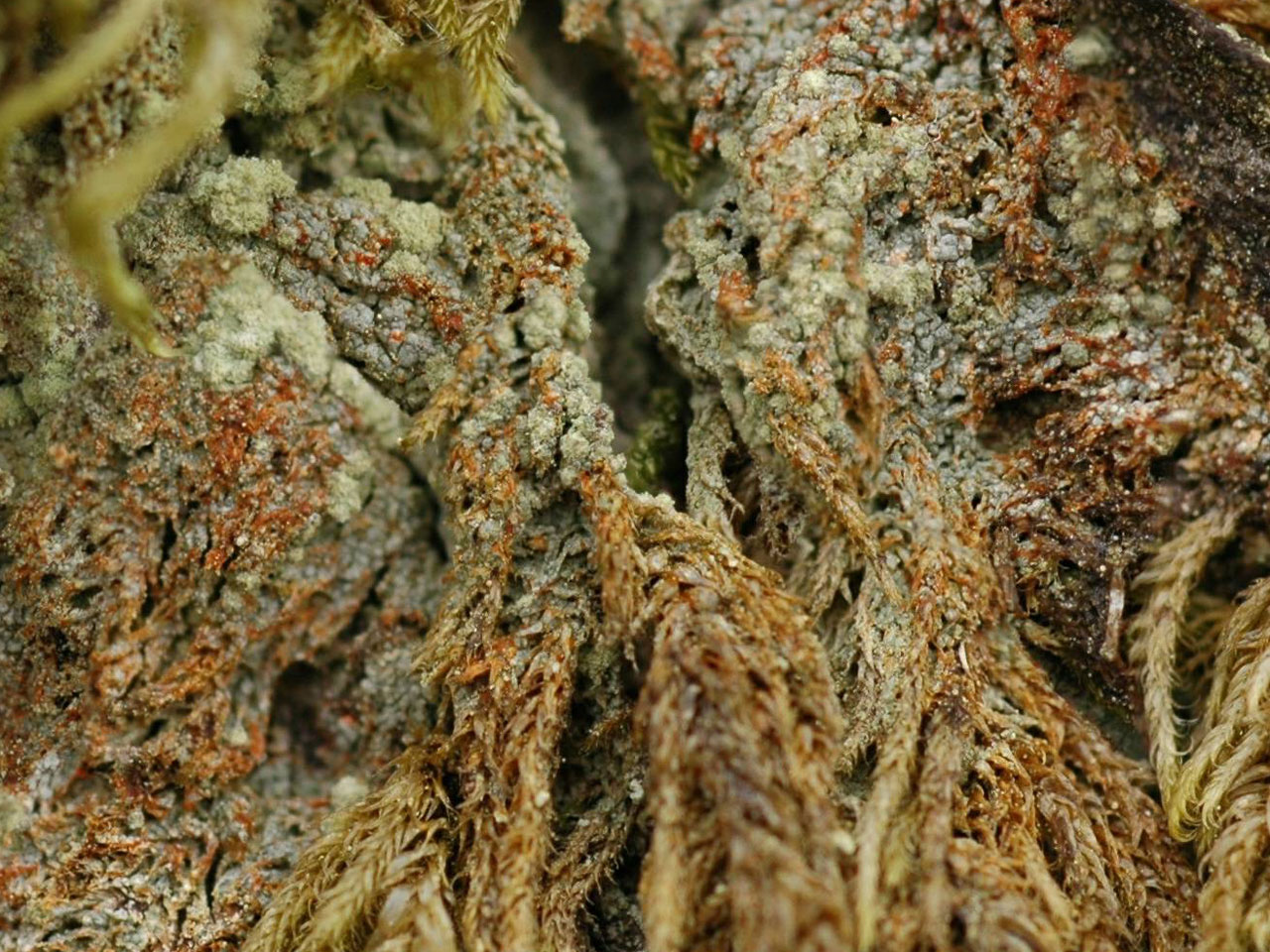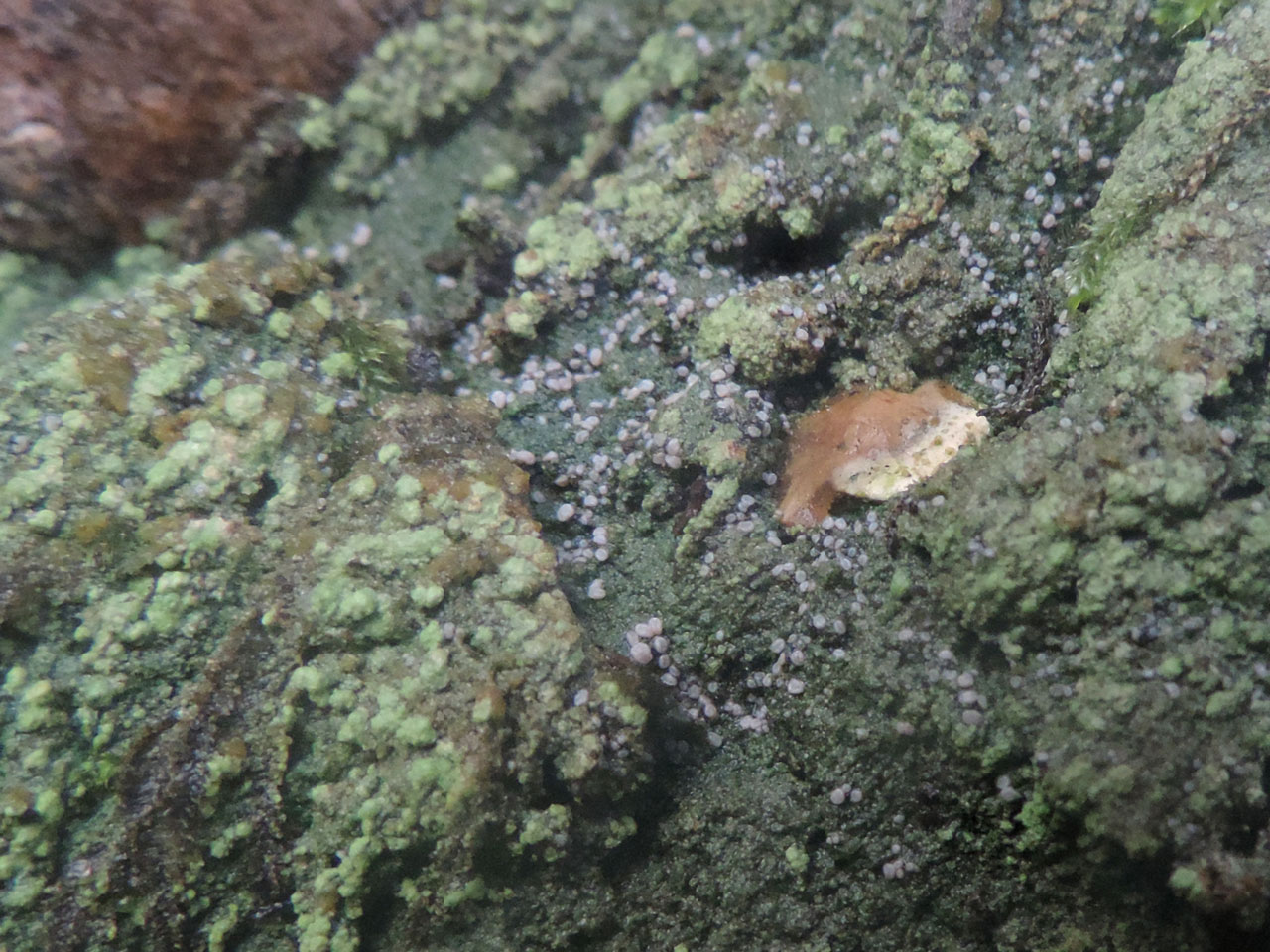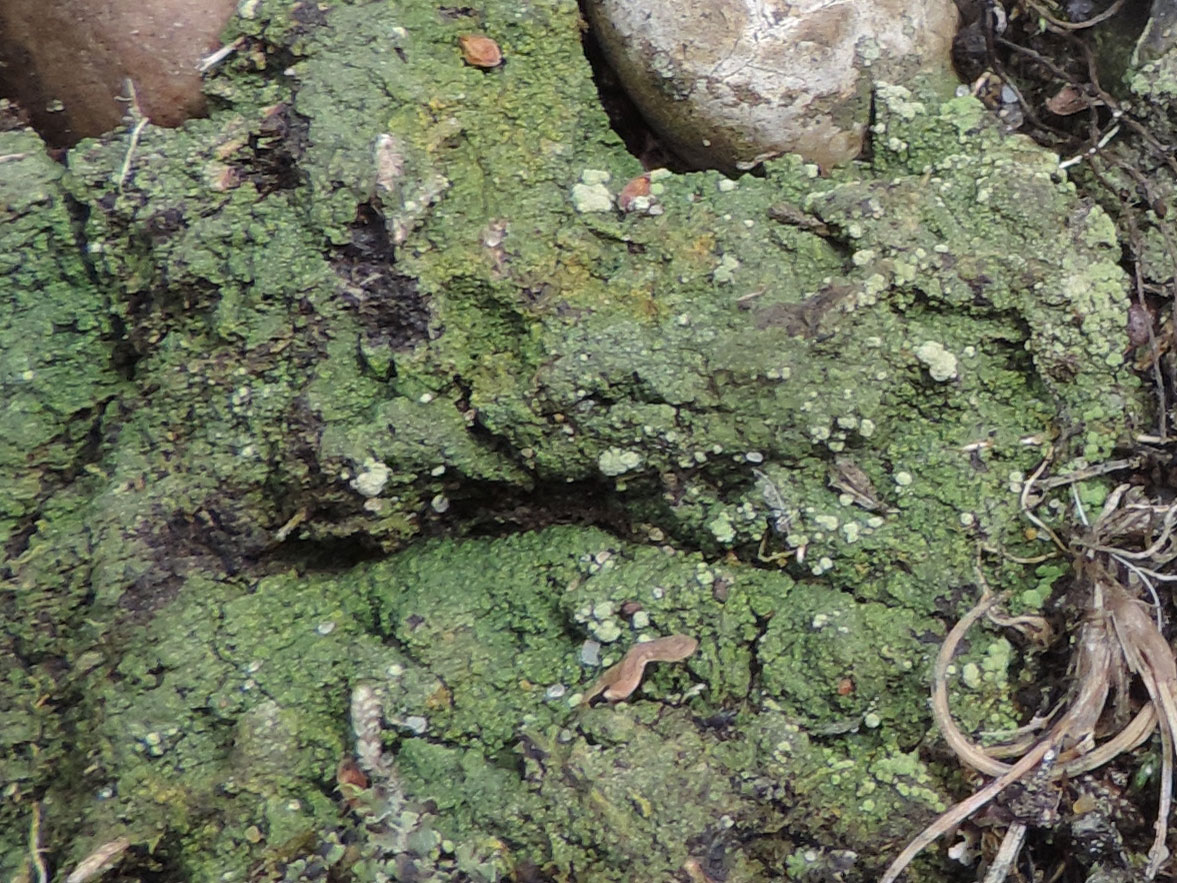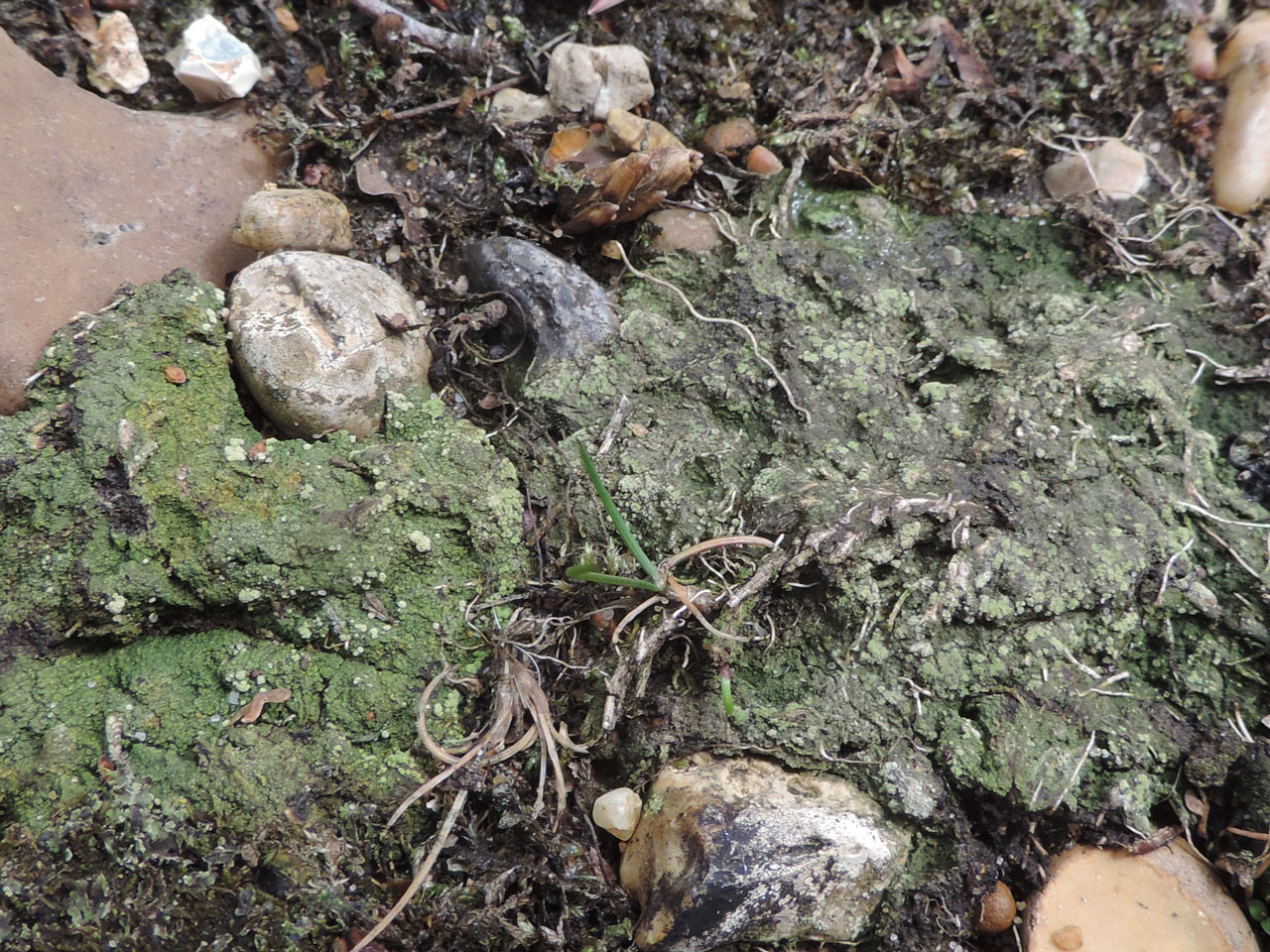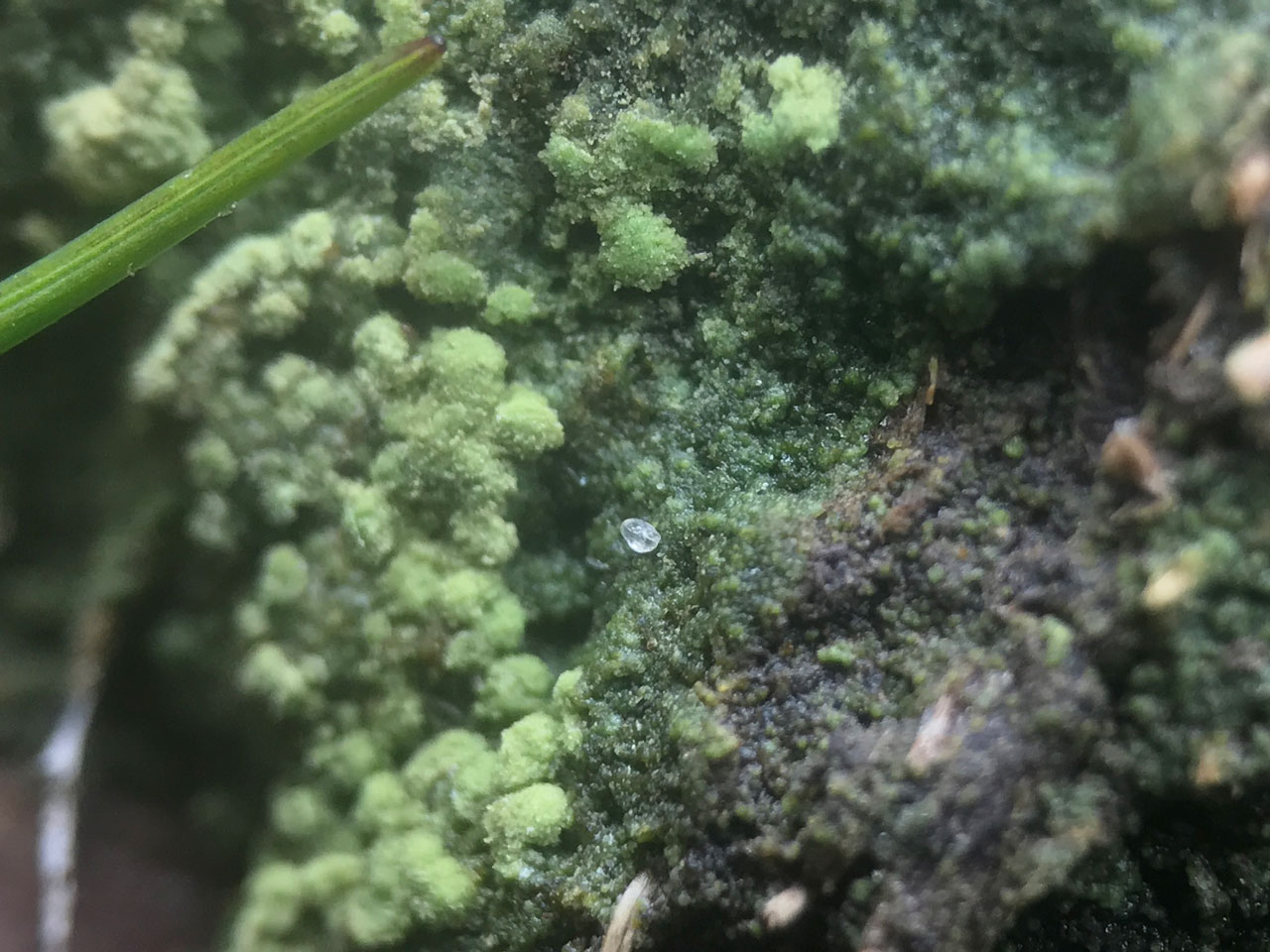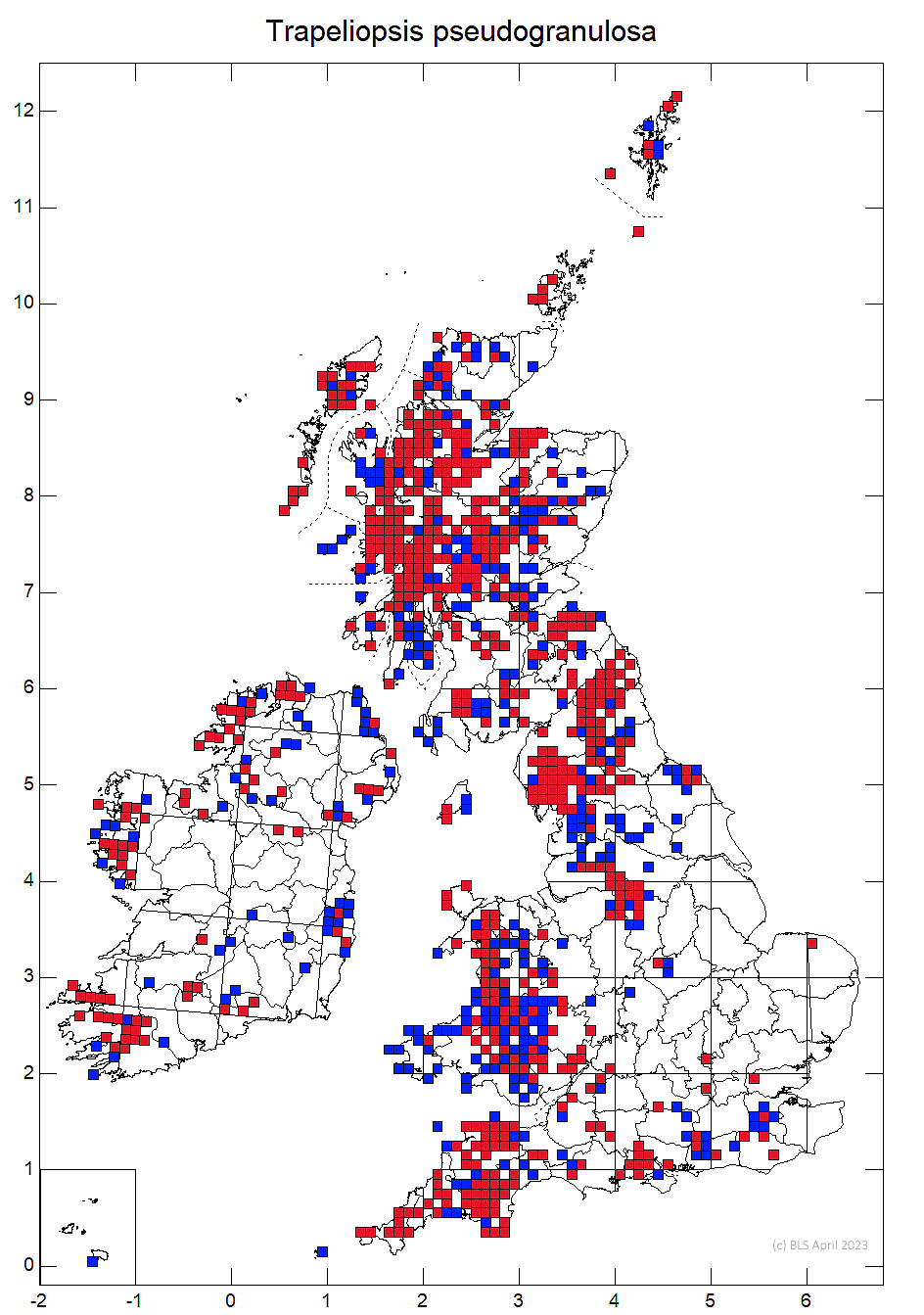A common sorediate lichen of damp acid substrates, especially in the north and west. Generally readily recognisable by the combination of the C+ red green thallus, the paler soralia and the K+ purple orange patches. The latter can be rare or missing, however, so should not be relied upon, the C+ species Trapeliopsis flexuosa or T. granulosa have more strongly areolate thalli that are not green and the similar looking Trapeliopsis gelatinosa is C–.
Thallus effuse, often wide-spreading and forming large patches to 20 cm diam., grey- or green-white, in part patchily orange-pigmented, K+ purple, of granular areoles that can coalesce forming a faintly cracked granular crust; areoles mostly 40–200 µm diam. Soralia mostly 0.2–1.6 mm diam., green-white, in part orange- pigmented, at first convex and discrete, later coalescing and forming coarse, irregular patches; soredia 18–25 µm diam., farinose, tightly packed together. Apothecia very rare in our region, 0.4–1 (–1.6) mm diam., rare, ± appressed, flat with a shallow, wavy true exciple; disc green-grey to grey-black. Ascospores 10–12.5 × 3.5–6 µm. Thallus, soralia and apothecia C+ red, Pd–, UV–; orange pigmented areas of thallus and soralia K+ purple, UV± deep orange-red (gyrophoric acid and an unidentified anthraquinone).
Characterised by the minutely granular thallus, rather large farinose C+ red soralia and irregular, patchy orange coloration reacting K+ purple. The orange coloration can be rare or absent, in which case the thallus resembles that of Trapeliopsis gelatinosa, but that has a C– thallus and less tightly packed soredia. Thalli without the orange pigment may aslo be miss-rercorded as either Trapeliopsis flexuosa or T. granulosa but these have areolate thalli.
On various humid sheltered acidic substrata, especially peat or over decaying bryophytes, rotting wood and plant debris, often in old woodlands; frequent.
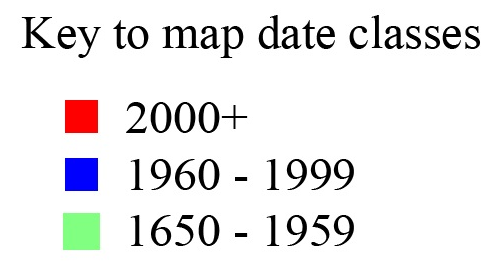
Throughout Britain and Ireland, commonest in the north and west.
Orange, A., Cannon, P., Aptroot, A., Coppins, B., Sanderson, N. & Simkin, J. (2021). Baeomycetales: Trapeliaceae, including the genera Coppinsia, Placopsis, Placynthiella, Rimularia, Trapelia and Trapeliopsis. Revisions of British and Irish Lichens 18: 1-19.
Text by Neil A Sanderson based on Canon et al (2021)
